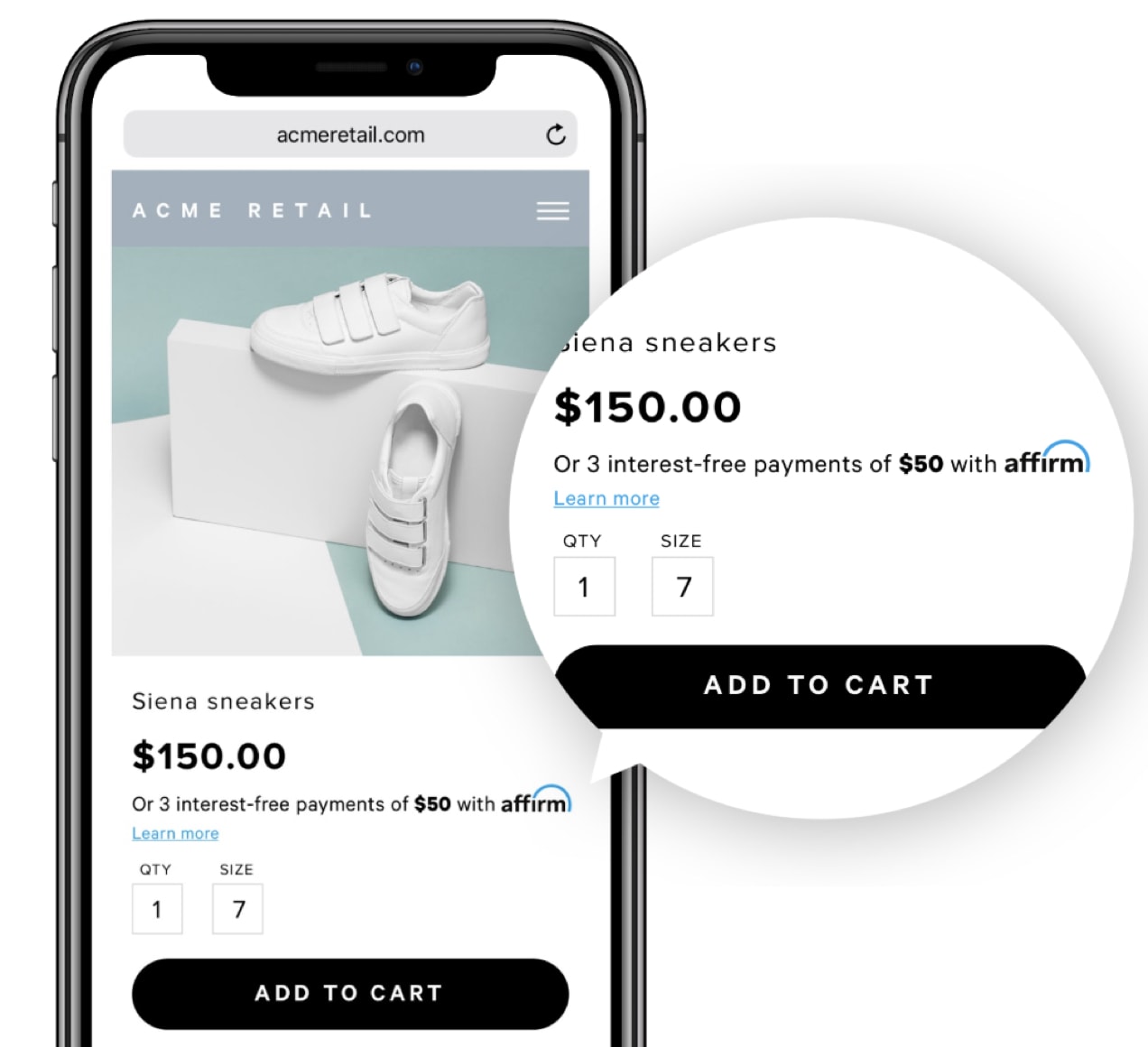Deciding how to price products has kept many a business owner up late at night. And not just new business owners.
Price them too high, and no one buys them. Price them too low, and you don’t make enough money. Price them just like every competing product, and you need to find other ways to differentiate yourself.
In this article we’re going to look at how to price products from two perspectives. First, we’ll cover some basic pricing tips so everyone is on the same page. But then, we’re going to go deeper and answer a few big questions.
Note: This post is specifically written for retail businesses, so the strategies may vary for companies selling B2B, wholesale, subscriptions, bookings, or other types of offerings.
Pricing basics — baseline considerations
↑ Back to topWhen first considering how to price a product, you have to do the math. There are costs incurred in development and marketing. And you must make enough on the sale to earn a profit.
Depending on the product, these costs can include:
- Production
- Marketing
- Labor
- Taxes
- Shipping, if you don’t charge separately
- Other business expenses, like licenses, permits, and warehouse fees
If you can lower any of these costs without sacrificing quality or service, you win, because that means you can keep the same prices but make more profit.
But the reverse is true as well. If costs go up, you lose profit.
As for marketing, the key is to figure out the strategies that deliver the best return on investment, and increase your use of those channels and methods. That’s much easier said than done, of course. But this is why using marketing that produces trackable data is usually preferable to ‘spray and pray’ marketing that doesn’t offer a reliable way to determine its effectiveness.
Put all those costs together, and then look at them on a per-product or per-item basis. For each widget you sell, what is the cost per item? Once you know that, choose a higher price, and the difference between the two makes up your profit.
Those are the basics of pricing. And you may see a few challenges already.

Pricing questions — what affects how you price products?
↑ Back to topBeyond the basics of pricing products, you’re faced with a lot of uncertainty, and it begins with this question: How much should I mark up my prices?
You have to make money. But if you mark up the price of a product too high, you might scare everyone away, especially if your price is significantly higher than most of the competition.
At least, that’s the conventional wisdom. We’ll come back to that in a moment.
Pricing becomes quite complex when you start considering this and other tough questions.
For instance, what is the purpose of this product in your overall business plan?
Maybe you’re selling what’s known as a ‘loss leader.’ You sell one product and actually lose money on it, on purpose. But, you do this to win a customer over so you can sell them other products later and make big profits. Some infomercials, especially in their heyday in the 1980s and 1990s, perfected this approach to pricing.
If you want an item to become your money maker that supports the loss leader, you price it very differently.
If it’s a staple product that sells by the truckload and will make profits based on volume, even changing the price by a few cents can lead to big revenue growth.
Another question to think about is, why do people want to buy your product?
Hopefully you already know the answer to this, and that’s why you created the product in the first place. But this question is a huge one, because the reason people want your products plays an enormous role in how much you can charge for them.
What you don’t want is to get caught up in a race to the bottom. There’s only one Walmart, and there’s a reason for that. Someone will always be willing to charge less than you. Trying to compete by offering the lowest prices is a losing approach to business and profits.
Thankfully, it turns out that most consumers don’t use price as their primary filter for deciding which products to buy.
Reasons people buy products other than price
↑ Back to topPeople buy for many reasons besides price. These include:
- Social status – I want this because of how it will make others think of me
- Fear of missing out – I want this because everyone else has it or is talking about it
- Values – this product says something about my values or beliefs or passions
- Identity – this product expresses something about my identity – cultural, religious, business, social, gender, etc.
- Desire – I want it because I just want it
- Meets a need – I must have this product to meet a need in my life
- Security and privacy – I want this product because it protects me, my family, or my possessions
Here’s an in-depth look at these and many other reasons people buy products.
The point is, people will pay more for a product if it resonates with these sorts of motivations. These matter more to them than just paying the lowest price.
So the key to optimum pricing is — you guessed it — knowing your audience.
Why does your audience want your product? What does it offer that nothing else offers? And how much is that worth to them?
Price a bit higher than you think
↑ Back to topOnce you settle on what you think is the ideal price for a product, make it a bit higher. You’ll help your profit margins, protect against inflation and surprise expenses, and make your business healthier for the long term.
Plus, this gives you room to offer occasional discounts and specials without hurting your profits too much.
Suppose you plan to sell a product for $50, and it costs $30 to produce and market. You’re making 66% profits on every sale. But if the costs of production suddenly rise for reasons outside your control to $35, your profits have sunk to 43%.
Make that initial cost $55, and you’re making 83% now, and 57% after the cost increase.
Pricing and commoditization
↑ Back to topThe race to the bottom happens when a product becomes commoditized. Whether you’re talking about toilet paper, toothpaste, or tamales, people will generally go for the lower prices on products like these. Right?
Not so fast…
Don’t set your prices based on the competition, or what you think customers will pay. If you understand why your audience wants your product, you can charge more.
Here’s an article about luxury toothpaste and other oral care products. One brand sells toothpaste for $55 a tube! It has ‘botanicals,’ whitening technology, and other marvels. They’re not selling this toothpaste at Walmart.

That’s a bit extreme, right? Like the toilet made of gold. Well, here’s a Bloomberg article about a two-pack of toothpaste that sells for $17. That’s $8.50 per tube. It’s even being pitched by Lenny Kravitz.
The same article mentions another toothpaste that goes for $100. Yes — $100 for toothpaste! Why? It’s for people who are concerned about fluoride but don’t want to lose the benefits it provides for their teeth.
The point is, specialized products meet specialized needs. For a discerning audience that values those features, they will pay for them, willingly and happily. And note also the power of celebrity — people will pay more for a product when someone they trust endorses it.
What about toilet paper?
Here’s an investigation into the luxury toilet paper market, with prices as high as $3 per roll.
Why? Various high-end brands appeal to environmental responsibility by using no plastic wrap, bamboo instead of typical tree materials, and recycled materials. Others offer better textures. And others sell based on beautiful designs — the toilet paper looks pretty and decorative.
Do you see how these companies are catering to particular values, beliefs, status symbols, and desires?
And yes, tamales. Here’s a story about luxury tamales, selling six dozen for $92, plus $18 shipping. That’s $110 for 72 tamales.
There is no product that cannot be re-imagined and sold for a higher price, as long as you create it for a particular audience.
Four product pricing tips
↑ Back to topWith all that in mind, here are a few specific tips and strategies you can use when figuring out how to price your products.
1. Use ‘free’ smartly
Neiman Marcus, the seller of the $110 tamales, could try selling them for $99 plus free shipping. They’d make a little less profit per sale, but might sell more volume. It would be a worthy test, because it takes advantage of the power of nine.
Free shipping is one possible ‘smart’ use of free, though it can also cost you if you misuse it, so be careful.
Offering a free gift with purchase is another smart approach. The customer still gets something free that motivates a purchase, but you aren’t giving things away for nothing.
2. Use Buy Now, Pay Later (BNPL)
The idea here is to spread out payments to make cost more manageable for your customers. Buying in installments is a similar concept.

The innovative aspect of the modern ‘buy now, pay later’ movement is that technology has made this super easy and secure for businesses to offer, and many are using it for lower-priced items, even items that cost under $100. See five advantages of using BNPL, plus technology that pairs with WooCommerce to make it easy for you.
3. Don’t cut prices when times get hard
There is no evidence that cutting prices during hard times will sustain your profit levels, your business, or your ability to pay your employees.
The reality is, if you continually offer discounts, customers begin to expect and even demand them. You don’t want to fall into that trap, because then you’re in the race to the bottom again.
4. Use coupons — smartly
If it’s always on sale, then it’s not really a sale. And customers figure that out. So if you choose to use coupons, use them wisely. Here are some good reasons to use coupons:
- Attracting new customers
- Reducing inventory of a certain item
- Giving back to the community
- Celebrating a holiday
- Increasing your average order size, as done with offers like ‘save 20% on orders over $100’
WooCommerce has dozens of coupon extensions for various situations, such as Smart Coupons. Want to become a pro? Read our full guide to using coupons on WooCommerce.
Don’t sell yourself (or your products) short
↑ Back to topDon’t let pricing stress you out and don’t try to compete with everyone else. Calculate your costs and set a sustainable margin. Then, highlight the benefits of your products and how they serve your customers. Focusing on your audience is the best way to command higher prices and protect your profits.
But when it comes down to it, your product prices are going to be unique to your business and audience. It may take a little time to figure out the perfect number. So be sure to keep in touch with your customers and keep an eye on analytics to know what’s going well and what you might want to change.
About






Thanks for that. I’ve always struggled with getting the correct price for my online learning-language action song packs (funsongs.co.uk) and this post helps!
A lot of good points were made, thank you.
Thanks for the info! We are currently expanding our online peruvian jewelry store, Laurella (laurella.co) for international sales, so this article comes right on time.